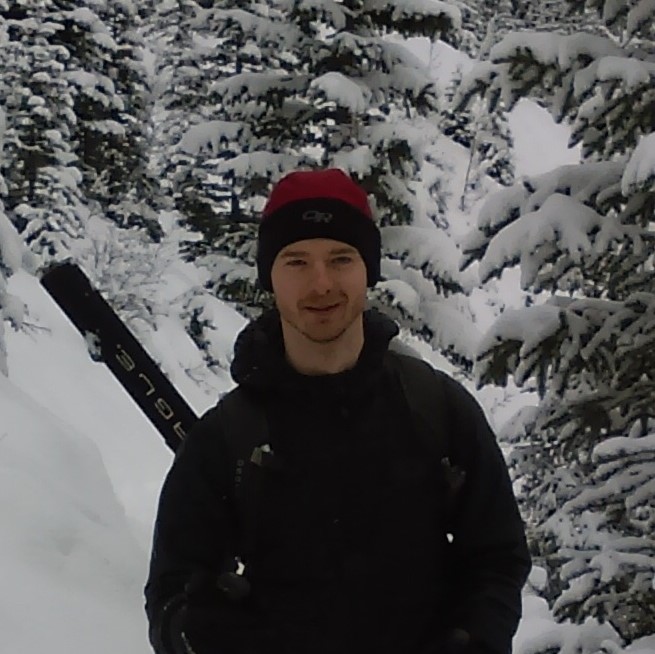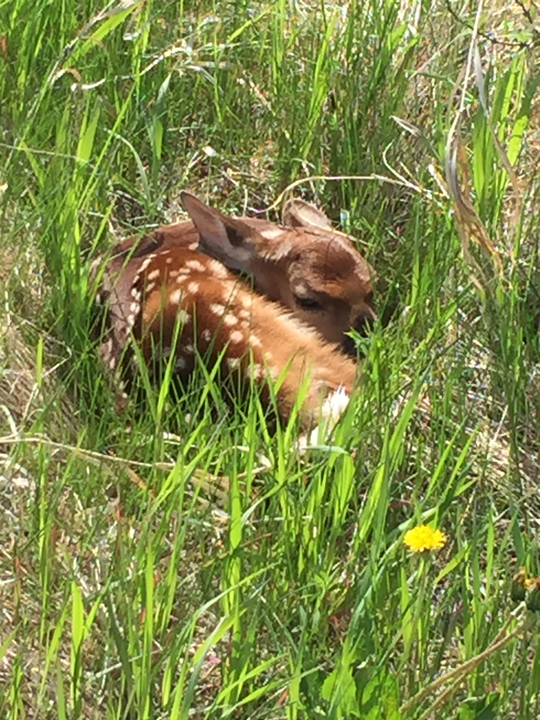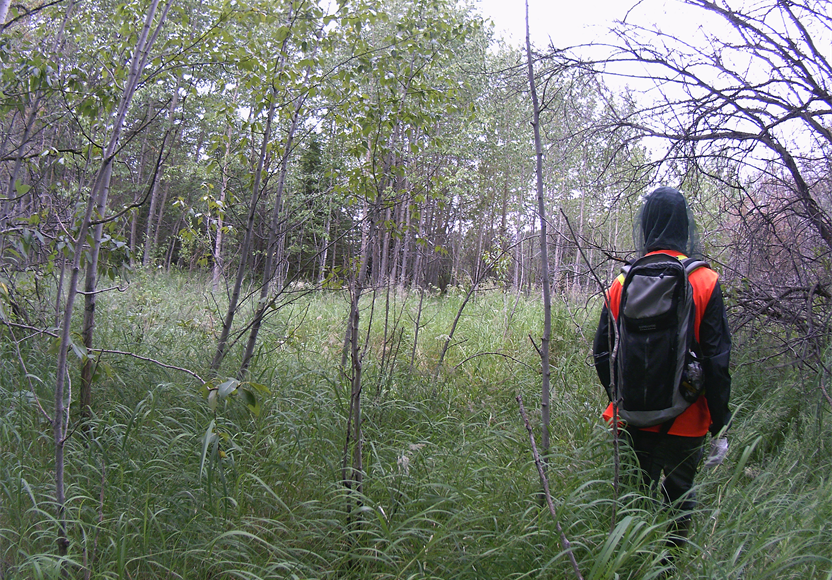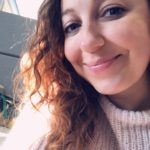Partner Series: Agroforestry Woodlot and Extension Society

Getting to know Robert “Bob” Underschultz, Environmental Technician at Agroforestry Woodlot Extension Society
Written by Michelle A. Gordy
A true Edmontonian, Bob was born and raised in Alberta’s capital city. He attended the University of Alberta and graduated from their Environmental Studies Program in 2019, with a focus on human-wildlife coexistence and creating beneficial co-existence strategies. During his studies, he volunteered with the Urban Coyote Project to create more awareness and reduce human-coyote conflict in non-lethal ways. He gained a keen eye for spotting the difference between coyote and dog scat, one of the key ways in which volunteers can help, as people can report coyote sightings and pictures on their website.
After graduating, Bob worked at the Wagner Natural Area, a provincial natural area located West of Edmonton. Here, he helped to look after conservation of the area and to deliver outreach and education programs for the public.
"Your surrounding natural habitat is more of a friend than a nuisance."
He enjoyed working on conservation and learning about rural and urban effects of humans encroaching on natural areas.
Continuing his career trajectory and passion for conservation and education, Bob began working at the Agroforestry Woodlot Extension Society in November 2020. At AWES, Bob is an Environmental Technician, and works on providing educational webinar courses for landowners on woodlot management, shelter belts, Eco-buffers (renovation, maintenance, and establishment), and wildlife corridors. Using shelterbelts and Eco-buffers as wildlife corridors can allow more genetic travel between animal populations, keeping them healthier. To find out more, you can register for their upcoming webinar, June 1, 2021 from 7-9pm.
In addition to education and outreach, Bob also takes part in many of the various projects that AWES is involved with across the province. Currently, he is working on a project at Pigeon Lake to help stabilize a portion of the bank and re-naturalize a woodlot area, degraded from OHV use. The team will be replanting the area with native species and removing harmful substances, like railroad ties over the Summer and Fall.
In the Vermilion River watershed, AWES has been an amazing partner, helping the VRWA on several projects in which landowners and municipalities have worked to restore natural areas like riparian zones and wetlands by planting Eco-Buffers of native trees, suckering willows and bushes, and wildflowers.


We are currently partnering with Bob and his team at AWES to finalize the Two Hills Eco-Buffer at Geleta Park by planting some wildflowers this Spring.
When chatting about partnership, Bob mentioned “AWES really values all it’s partnerships. You get that nice two-way conversation and sharing of ideas. Having the unique relationship with Vermilion [VRWA] is beneficial because you get a better idea of what organizations need in regard to conservation of their forestry and woodlot areas.”
When asked what his favourite part of working for AWES was, he said it was a “combination of talking about topics I’m interested in, like wildlife corridors, and also planting projects, and choosing the best design and species for the project.”
He says he really wants to spread awareness and education in the best way possible, and so stated the biggest challenge to him in his job is “keeping up with all the new information and keeping on top of Best Management Practices [BMP] for Environmental Conservation.”
While there is a lot to learn about BMPs for any landowner or person working in conservation and restoration, one piece of advice Bob offered, I think is one we can all easily keep in mind and that is, “Your surrounding natural habitat is more of a friend than a nuisance…it takes tremendous work and time to re-establish it…on the flip side it’s really easy to destroy or remove it.”
When Bob isn’t working, he’s still spending time outside, usually on long walks in the ravine with his Bordoodle (Border Collie/Poodle mix) or camping and hiking in his favourite area, Kananaskis.

The VRWA would like to recognize the hard work and incredible partnership provided by AWES. Special thanks to Bob for letting us get to know him better.

